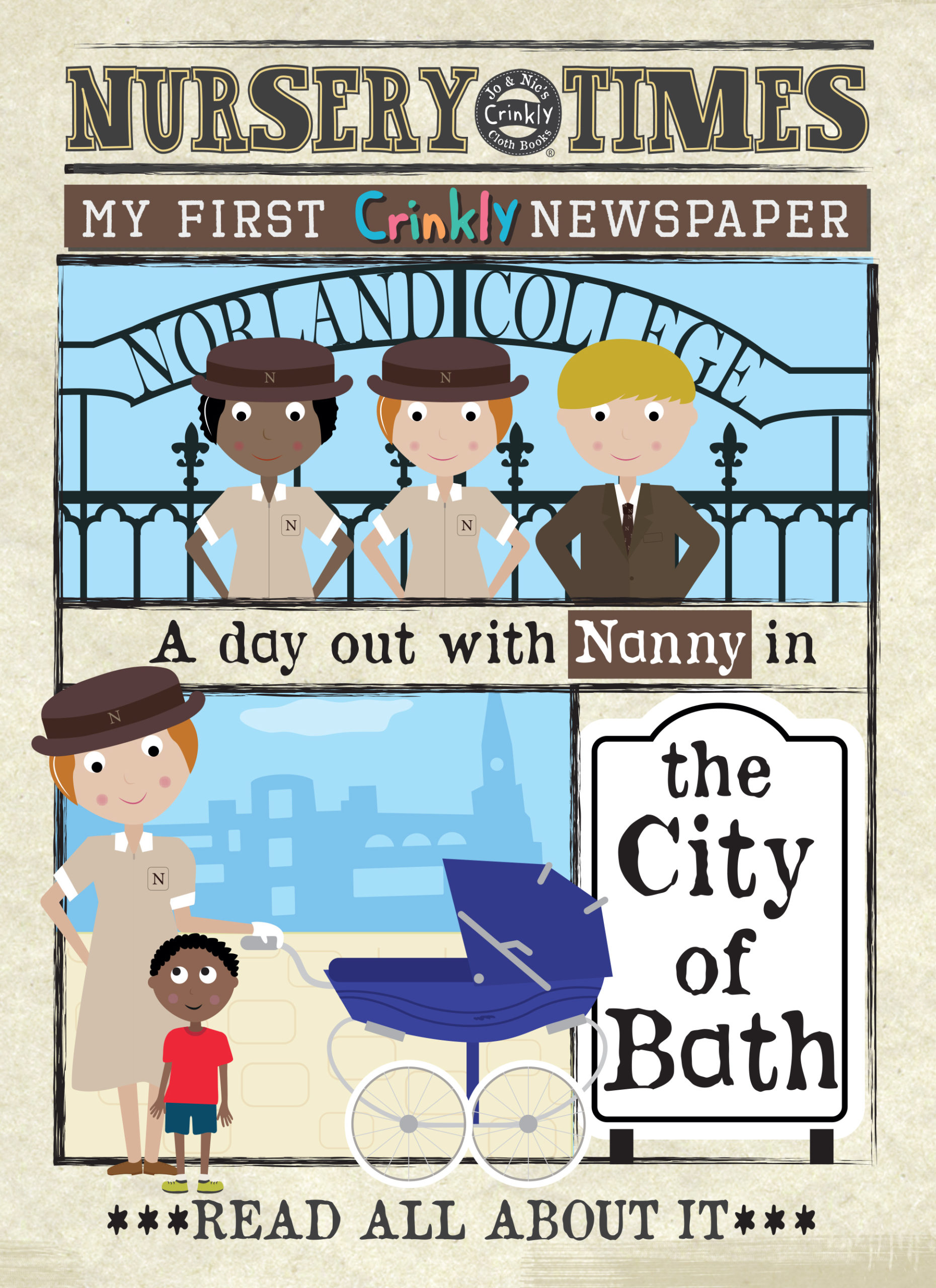The history of Norland in 13 objects: the first black book from 1892
11 March 2022

The second object in our series celebrating the 130-year history of Norland through 13 objects, is the very first black book from 1892.
The first Norland black book records the registration of probationers, beginning with the very first cohort of five probationers on 25 September 1892 and running to those registered in April 1897. It offers a fascinating insight into the first students to train at the Norland Institute.
The black book is Norland’s official register of student enrolment. Row after row of immaculately handwritten entries for each student reflect both the differences as well as the similarities between 1892 and now.

There is quite a lot of data you might expect to see, such as the student number, enrolment date, date of birth, home address, and education. Perhaps a little more surprising, given that the Norland Institute reflects a pioneering moment in childcare history, are the fields concerned with relevant training, previous experience caring for children, and any former occupations. Even at the very start of formal childcare training, Norland is seeking and expecting to see experience of childcare and a commitment to the role.
The range of education attainment is broad. Some of these first probationers have received a home-based or governess education, others have attended a private school, others grammar schools. Especially fascinating are the specialist training institutions that some of the first probationers have attended, such as Stockwell College built in 1861 to train schoolmistresses. Two are trained teachers with certificates from the College of Preceptors. Founded in 1846, the College of Preceptors is the UK’s oldest teaching association and welcomed women teachers from the beginning. Certificates attained include those for first aid, drawing and needlework. Many of Norland’s first probationers have experience of childcare either informally by caring for younger family members or the children of friends, or as nursery governesses. As part of the entrance requirements, candidates were expected to pass a General Knowledge exam.

There are fields capturing level of attainment in needlework and musicality. Most are considered good or fair at needlework and the majority are also considered musical, suggesting these were typical skills acquired by educated women of the time. Sewing is still a skill taught at Norland, 130 years later, and is enjoying a wider resurgence as many of us try to re-use and recycle for sustainability. Interestingly, we still teach musicality today as part of our focus on brain development in the early years.
The preferred minimum age for entrants was 18. There were occasional exceptions. For example: Edith Sperling, who went on to become Matron of Marlborough College, was aged 15 when she enrolled in 1893. There was an upper age limit of 30. Most probationers enrolled in those first years were in their early to late 20s.
There are fields included that would not be considered appropriate today, such as father’s occupation (it can be safely assumed that mother does not have one). Among the earliest registrations, occupations of fathers reflect an upper and upper middle-class student intake. They tend towards the professions in most entries, rather than trades. The earliest ones include civil servant, solicitor, architect, clergyman, county surveyor and so on. Several fathers give their occupation as merchants and bankers, reflecting the extensive overseas trade and commercial infrastructure that made Britain in the 19th century the most powerful trading nation in the world. Several fathers describe themselves as ‘gentleman’ or simply leave the box blank, suggesting their membership of the landed gentry.

The geographic range of the first probationers indicate the effectiveness of Emily Ward’s publicity machine and personal networks. There are probationers from London, especially the boroughs of the south west and west, but also from Sussex, Northumberland, Pembrokeshire, Cambridgeshire, Suffolk, Leicestershire, Tyne and Wear, Devon, Aberdeenshire, Cheshire, Dorset, Merseyside and Essex.
Norland was clearly recruiting from a fairly exclusive class, a trend that was sustained by the fees. In 1892, the fees were £36 for the six-month course, which rose to £66 when an extended curriculum was introduced in 1903. Financial assistance was available from 1897 when Norland Nurse Maud Seppings encouraged enough nurses to donate to the Foundation Fund to provide a grant to one of the probationers in each cohort. The first principal Isabel Sharman introduced the ‘Maidens’ scheme in 1904, enabling those without the means to pay the then £80 fee to undertake light housework for a year before enrolling for the much-reduced fee of £12. These early financial schemes continue today through the Emily Ward bursary and the Norland Foundation.
The early training programme prescribed three months of residential training, including successive fortnights specialising in cookery, laundry and household chores which the students worked at until noon. The afternoons were spent in lectures, kindergarten games, walks, needlework and similar occupations. The final three months were spent in a hospital children’s ward.

Securing these placements proved challenging to organise as matrons were reluctant to compromise their own nurse training by admitting trainees from elsewhere. At first, the London hospitals were uncooperative, and probationers were sent to hospitals all over the UK. The locations of each are entered in the black book. Following their hospital stint, probationers were given a short quarantine holiday to prevent them taking any infections picked up in hospital into their first family employment. In later years, hospital matrons specifically asked for Norland probationers. Today’s Norland students are still exceptional in being the only ones except medical and nursing students able to attend a placement on a busy hospital ward.
The black book records end with the name of their first employer, the date they began this role, and the fee paid. We’ll look in more detail at Norlanders at work in a future blog.
Failures are also recorded in the black books. Students that do not complete their studies or are struck off the venerable Norland Nurse list have a red line drawn through their registration in the black book. Ditto those that move into a new career or withdraw. The first three pages totalling 18 of the very first probationers record three dismissed, three moved on to other careers (nursing, hospital, secretarial), one withdrawn and subsequently married, two withdrawn for health reasons and one death.

The black books are still used at Norland today. Each year, first-year students formally sign the black book to confirm their enrolment during the annual Founder’s Day ceremony that forms part of orientation week. At the ceremony, three candles are lit in memory of founder Emily Ward, the first Principal Isabel Sharman and to all Norlanders. Today’s register details each student’s number, full name, date of birth, home address, education and their commitment to the Norland Code of Professional Responsibilities. They also sign up to the code separately at the start of each year of training. When their training is complete, the date is added, the academic qualification gained, their Newly Qualified Nanny probationary year completion date, comments and their renewed commitment to uphold the code as a Norlander.
There are now 12 black books listing the registration and signature of every single student to enrol at Norland since 1892. The next cohort of students to enrol in September 2022 will be the 146th to train at Norland, hence their title Set 46 (the hundred is left off for ease). 146 cohorts across 130 years due to multiple cohorts enrolling each year when the course was shorter. The students of Set 46 will add their signatures to the thousands that have gone before, a family of Norlanders committed to attaining the very highest qualifications and standards in childcare and early years education.








